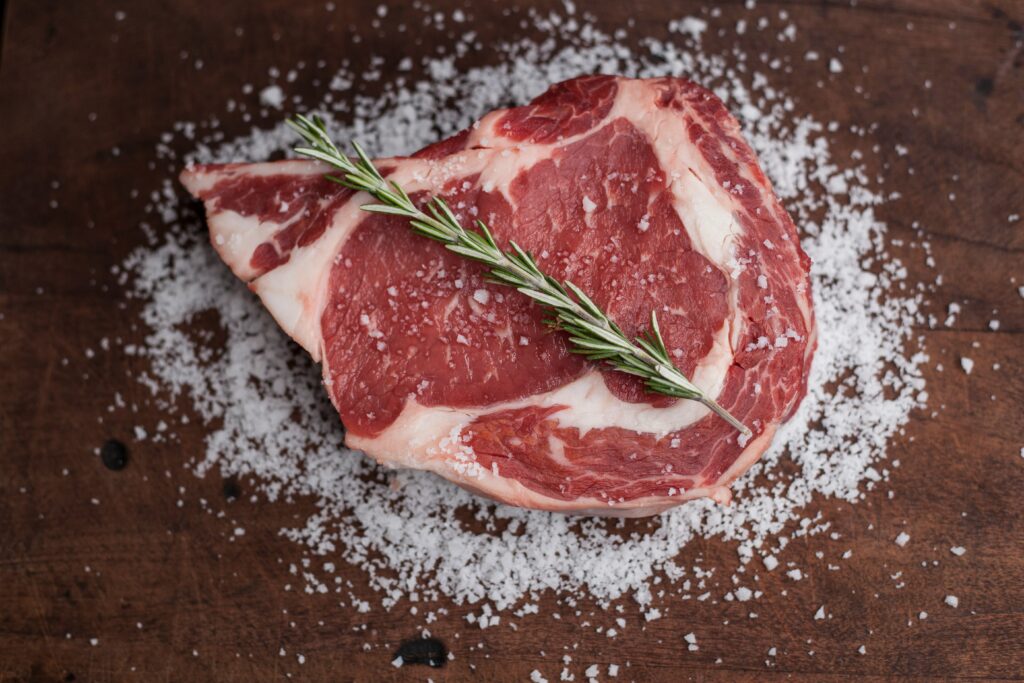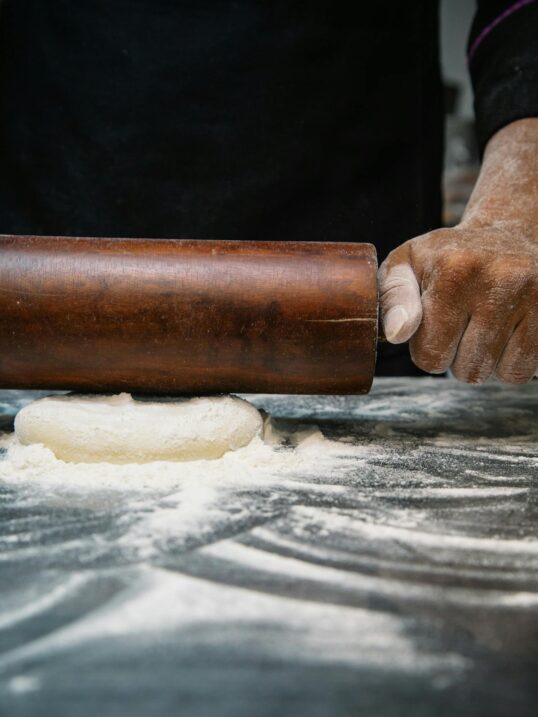If you have ever asked the question ‘What’s the best type of steak?’ at a dinner party or casual get-together, you must have received a variety of answers that left you baffled.
Sirloin, prime rib, filet mignon, tenderloin, strip steak, etc. – the contenders for the top spot are many.
What if we told you there isn’t a singular answer to this question? In fact, what makes any cut the best depends largely on how you intend to prepare it, besides your personal taste and budget.
For instance, while some prefer the buttery texture of a filet mignon, others want their steak to have a little bite, like in brisket or flank.
In this article, we will help you understand the differences between popular cuts of steak, offer pro tips on choosing a steak based on various considerations, and share Insider’s ranking of the best steaks.
Let’s get started.
What Is the Best Type of Steak?
Several factors must be considered before attempting to answer this question.
Steaks differ from each other based on the anatomy of the cut, the type of muscle it contains, and the amount of fat and connective tissue present in the cut. In some cases, bone-in steaks have an edge over boneless cuts in flavor and juiciness.
Steaks cut from the rib, short loin, and sirloin sections of the steer are generally more tender than those taken from the chuck (shoulder), belly, and round (rump) sections.
Why, you ask? For the simple reason that these sections consist of less-used muscle groups. On the other hand, cattle use their shoulder, leg, abdominal, and rear muscles to move around; meat from these portions is, therefore, firmer and tougher.
However, as any butcher would tell you, these hard-working sections give us some of the most flavorful steaks; flat iron, skirt, flank, round, Denver, bavette, etc. are a few names to remember in this category.
Popular Cuts of Steak
Let’s look at some firm favorite steaks, moving from the forequarter (front section) of a cow to its hindquarter.
Prime rib and ribeye
The rib section of the animal gives us the Prime rib and Ribeye steaks, which are prized for being tender and succulent. However, it’s not just the tender meat that sets them apart. There is significant fat marbling through both cuts that renders during the cooking process, resulting in a moist and juicy steak.
T-bone vs porterhouse
You might have heard of a T-bone steak or a Porterhouse steak before. The short loin portion of a steer is where these steaks come from. In addition, the short loin also gives us the New York strip steak, also known as the strip loin, sirloin strip, or top loin.
When it comes to the type of meat, it may seem T-bone and Porterhouse steaks have earned a certain distinction. Although they are taken from the short loin, a portion of the adjacent tenderloin muscle makes its way into these cuts. Both steaks have a T-shaped bone that runs through the cut.
On one side of the bone, you get the N.Y. strip from the short loin primal, whereas, the other side contains a portion of the delicate tenderloin (a.k.a. Filet Mignon).
This doesn’t, however, mean T-bone and Porterhouse steaks are interchangeable; they are anything but. Sliced from the rear end of the short loin (closer to the sirloin), Porterhouse steaks carry a generous portion of tenderloin, comparable to the quantity of N.Y. strip across the bone. T-bone steaks, by contrast, contain a much smaller portion of tenderloin.
In a sense, the Porterhouse steak combines the best of both worlds, with melt-in-the-mouth tenderloin on one side, crossing over to the rich, bursting-with-umami flavor on the strip loin side. That said, this cut is pricey and a bit trickier to get right.
Further to the back of the steer lies the sirloin cut which gives us the top sirloin, tenderloin, and bottom sirloin steaks. While tenderloin is undoubtedly popular for its buttery texture and cooks fast, top sirloin is a well-marbled cut that gives a moist and juicy steak. The bottom sirloin cut is best suited to be used as ground beef, owing to its toughness.
Best Steaks for Each Dish
By now, you realize there are well over a dozen varieties of steak, each characterized by varying degrees of tenderness, meat-to-bone ratio, fat marbling, muscle toughness, and beefy flavor.
This also means not all steaks can be cooked the same way. Some cuts with tougher muscle fibers must be cooked fast at high temperatures (to encourage muscle breakdown and keep the meat from drying out), while others respond well to slow-cooking techniques (sous vide, slow-roasted, etc.) Similarly, while some cuts can be grilled, others can only be used in a stir-fry or as ground meat.
Keeping this in mind, let us look at which cuts are best suited for different dishes and occasions.
Best for stew: Chuck
If you thought just about any cut of meat would do well in a stew, think again. Stews are a typical example of low-temperature, long-time cooking, which is unsuitable for tender cuts. On the other hand, cuts with tougher muscle and more collagen take well to stewing.
The chuck portion of a steer consists of the neck, shoulder blade, and upper arm muscles, which is where chuck steak or gravy beef comes from. While the toughness of the neck muscle makes this cut unsuitable for grilling, searing, or other high-heat cooking methods, stewing it breaks down the collagen and turns it into gelatin. This tenderizes the meat and makes it moist.
When cooking a beef stew, always use chuck steak and remember to brown the pieces before adding them to the stew for a richer flavor.
Best for a fancy steak dinner: Prime rib, ribeye, filet mignon, or porterhouse
Whether celebrating a special occasion or just in the mood for a fancy steak dinner, there are quite a few options you can choose from. Prime rib, ribeye, filet mignon, and porterhouse steaks fall into this category of decadent and super-satiating cuts worth the extra dollars you shell out.
A prime rib cut, also known as rib roast, standing rib roast, or prime roast, includes the portion from the sixth through the twelfth ribs of a cow’s ribcage. The meat surrounding the ribs is tender, flavorful, and beefy. The generous fat marbling adds intense flavor and richness to this cut.
A prime rib grilled or roasted as a whole becomes a crowd-feeding, showstopper item on any menu. For a smaller serving, a ribeye steak is ideal. This is a smaller portion of a prime rib cut and can be bought in individual portions or as a larger, bone-in variety that serves two. Ribeye steaks can be grilled, roasted, or pan-seared.
Another luxurious cut usually reserved for special occasions is the filet mignon, which means a ‘thick, delicate slice’. Taken from the pointy end of the tenderloin section of a cow, this pricey steak is sought after for its melt-in-the-mouth texture and leanness. However, tenderloin isn’t particularly known for its flavor compared to other cuts and needs additional seasonings or marinades to amp it up.
A porterhouse steak is ideal when you want a premium cut but are undecided about whether to go for something tender or one that’s got umami written all over it. With equally generous portions of tenderloin on one side and N.Y. strip (sirloin strip or strip loin) on the other, this steak could weigh up to a pound and easily serve two.
Best for stir fry: Flank, skirt, top sirloin, or Denver
There are two factors you need to consider while selecting a cut of meat for stir-frying – the meat shouldn’t be fall-apart tender or it won’t hold its shape when stir-fried; second, look for steaks that can be sliced thinly across the grain before tossing it into a wok.
Flank, skirt, top sirloin, and Denver steaks are ideal cuts for a stir-fry dish. Of these, a flank steak is the leanest, taken from the well-used abdomen area of a cow. By comparison, a skirt steak has a more intense beefy flavor and generous fat marbling. Both types of steak must be sliced against the grain for a tender bite.
A Denver steak is cut from under a cow’s shoulder blade and has a decent amount of fat marbling. Although more expensive than flank and skirt steaks, its meat is much more tender. Denver steaks are difficult to get hold of in a supermarket; you probably have to purchase them directly from a butcher. However, the result is certainly worth the extra effort!
A top sirloin steak has a great combination of beefy flavor and a firm and juicy texture, making it a top choice for a stir-fry cut.
Although not the best choice, you can make a chuck steak work well in a stir-fry dish, as long as you trim the connective tissue. While this collagen-rich tissue is rather desirable when stewing beef, it remains inedible with high-heat cooking methods (such as stir-frying) and thus, must be removed.
Best budget-friendly: Hanger or chuck eye
The nice thing about beef? There are at least a couple of handy options for every occasion! This means even if you are on a tight budget, you can still satisfy your meat cravings while keeping expenses on track.
Budget-friendly cuts of beef include flank, skirt, flat iron, hanger, and chuck eye steaks. A flat iron steak is cut from the upper portion of a cow’s shoulder blade in the chuck primal.
Although leaner than a Denver steak taken from under the blade, this cut has a fair amount of fat marbled through it, which yields a moist and juicy steak. When it comes to tenderness, a flat iron steak is second only to a filet mignon, nonetheless, you must slice it against the grain.
A hanger steak is cut from the abdominal region of a cow and falls into a similar category as skirt and flank steaks. Also known as a butcher’s cut, since butchers would keep this less-desirable cut for themselves, a hanger steak can be tough to spot in a supermarket.
With the right marinade (note: active acidic ingredients) and cooking method (grilled high and fast), however, this could become one of your go-to cuts for weeknight dinners.
A chuck eye steak is vastly different from a chuck steak, although both cuts are taken from the shoulder portion of a cow. Also known as a poor man’s rib eye, a chuck eye steak has a similar quality to the rib eye, reasonably tender with a bold, beefy flavor, at a fraction of the cost.
Read More: What to Do with Leftover Steak
Best for grilling: Ribeye, N.Y. strip, porterhouse, T-bone, tenderloin, or flat iron
Technically, any steak with an even shape and uniform thickness can be grilled. How well it turns out depends on the type of meat (tender vs. firm) and how it was grilled (time and temperature).
The best steaks to grill include ribeye, N.Y. strip, porterhouse, T-bone, tenderloin, and flat iron. You can also grill top sirloin, flank, and skirt, taking care that you don’t overcook these tough cuts.
A ribeye steak must be grilled on high heat. This cut is available in bone-in (Tomahawk) and boneless varieties. The presence of a bone adds a depth of flavor to the steak. Remember meat near the bone cooks slower, so you must ensure you also check this area for doneness.
Compared to a ribeye steak, an N.Y. strip is firmer and has a more intense flavor. Both cuts have ample amounts of fat that melt during high-heat cooking, imparting moisture and flavor to the steaks.
What’s more, the thickness of these steaks allows you to get a nice sear on the outside while keeping the inside tender.
With porterhouse, T-bone, and tenderloin, you need to keep a close eye to prevent the cuts from getting overcooked. These steaks have varying quantities of tenderloin muscle which cooks fast, while porterhouse and T-bone also contain portions of N.Y. strip, which is more forgiving.
The best way to grill these steaks is to do it quickly at a high temperature, leaving the tenderloin well-done and the strip at medium rare doneness.
Flat iron, flank, and skirt are all cuts best enjoyed medium rare. You can achieve this by grilling the steaks at a high temperature for a couple of minutes on either side. Longer cooking times toughen the muscle fibers by eliminating any leftover moisture; this is something you want to avoid.
Top sirloin is a fairly inexpensive cut that is well-suited for grilling and best cooked medium rare. Note that a thicker cut of this steak will take a few minutes longer to cook for the desired level of doneness.
Are Good Cuts of Steak Expensive?
If there’s anything our fascination with steaks has taught us, it is that a hearty steak doesn’t have to cost you an arm or a leg. Given the variety of steaks available in a supermarket or at the butcher’s, there’s always a steak for every price point.
Sure, you might want to reserve a filet mignon or porterhouse for an extra special occasion, but there are plenty of other cuts that can amply satisfy your cravings and not be considered splurges. Case-in-point: the flat iron steak.
This affordable cut is a superior combination of tenderness and a bold, beefy flavor. Chuck eye is another tender, flavorful cut, comparable to a ribeye, except in what it would cost you.
Skirt, flank, and hanger steaks are other inexpensive cuts great for the grill. We could go on, but we hope this sufficiently answers the question.
Insider’s Insight
Let’s sum up what we have discussed so far. There are many options to choose from when looking for a perfect steak.
If tender and buttery is how you like it, tenderloin cuts, notably the filet mignon, and ribeye and flat iron steaks are a must-try. For those seeking a bold, beefy flavor, N.Y. strip, skirt, flank, top sirloin, and chuck eye steaks are the best.
T-bone and porterhouse steaks are also highly sought after for their two-in-one quality that combines buttery tenderloin with beefy strips in a single steak.
Skirt, flank, hanger, flat iron, and chuck eye steaks are budget-friendly options for weeknight dinners. For a beef stew, chuck steak works best while flank, skirt, top sirloin, and Denver are ideal for a stir-fry. Most steaks of uniform thickness grill well, and care must be taken to prevent tough cuts from overcooking.




Leave a Reply